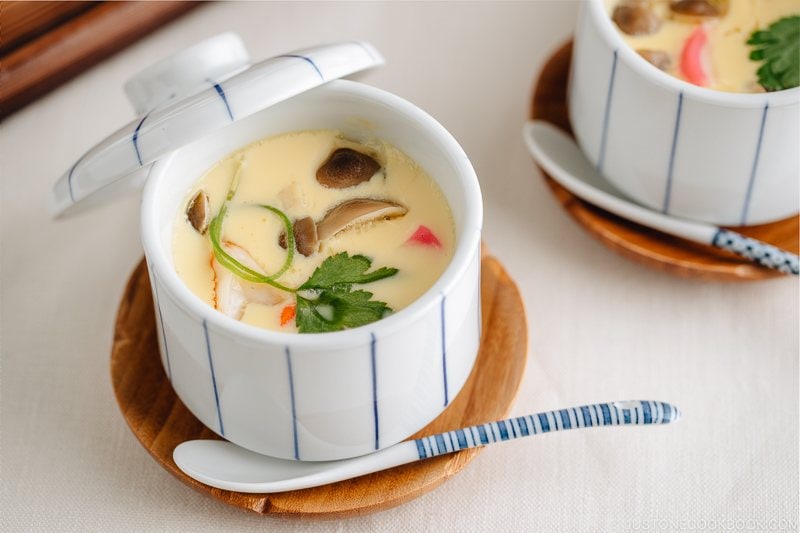
Steamed in a dashi-based sauce, this Instant Pot Chawanmushi is a savory Japanese egg custard made with seasonal ingredients. Delicate and silky smooth, it makes a perfect appetizer to start your meal!
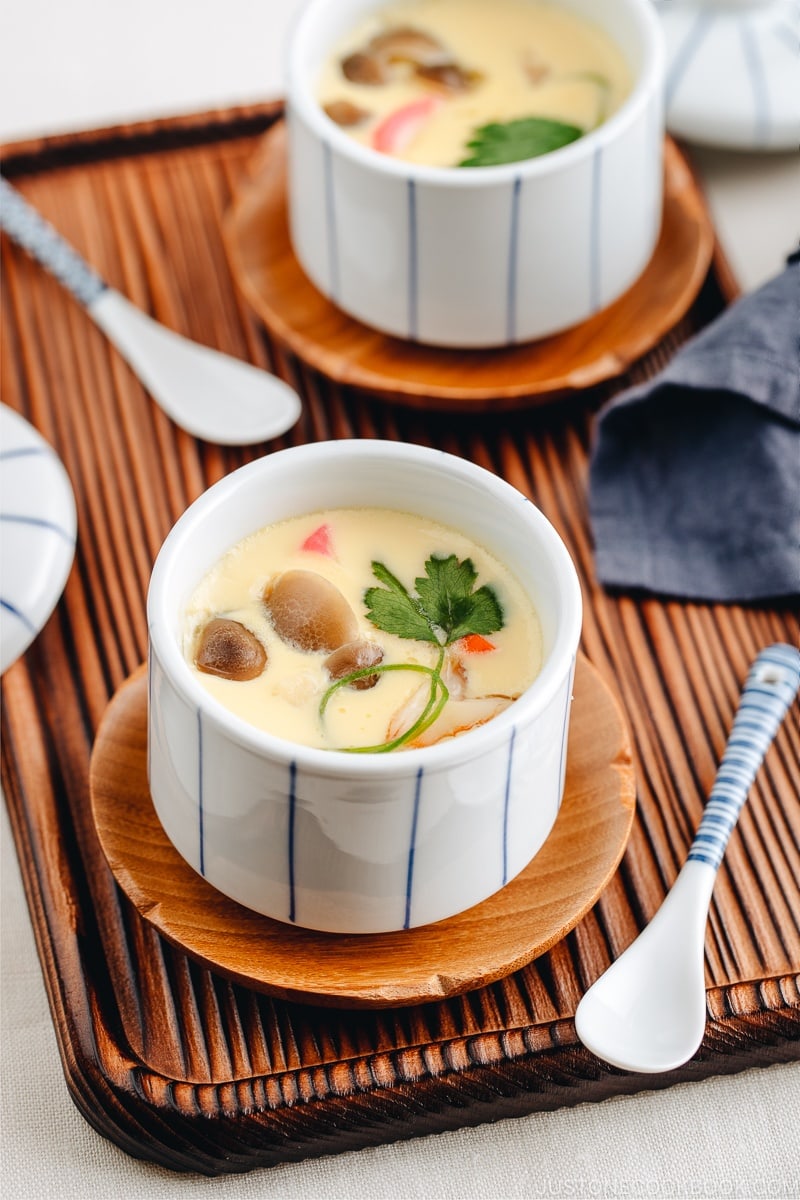
For the warmest and welcoming appetizer to grace a Japanese meal, it always feels right to start with steaming cups of chawanmushi. Made with dashi-infused egg mixture with the freshest seasonal ingredients, this Japanese savory egg custard is meltingly smooth and deeply flavored.
It is typically cooked in a traditional steamer or in a hot water bath, but if you happen to have an Instant Pot, you can easily make chawanmushi in the electric pressure cooker. When you’re busy making main and side dishes on the stovetop, Instant Pot Chawanmushi is particularly convenient and dependable.
Watch How to Make Instant Pot Chawanmushi
Steamed in a dashi-based sauce, this Instant Pot Chawanmushi is a savory Japanese egg custard made with seasonal ingredients. Delicate and silky smooth, it makes a perfect appetizer to start your meal!
The Perfect Ratio for Egg to Dashi
When you research what’s the best ratio for egg mixture to dashi in Japanese, most of the websites would mention that the ratio is 1 to 2.5 (egg mixture to dashi by volume). Although it does not have to be exact, it’s good to know the basic ratio to start and you can adjust later as you like. [ml = g]
- 1 egg (50 ml) – 125 ml dashi
- 2 eggs (100 ml) – 250 ml dashi
- 3 eggs (150 ml) – 375 ml dashi (can make 5 200-ml ramekins)
- 4 eggs (200 ml)- 500 ml dashi
- 5 eggs (250 ml)- 625 ml dashi
- 6 eggs (300 ml)- 750 ml dashi (can make 10 200-ml ramekins)
- 7 eggs (350 ml)- 875 ml dashi
- 8 eggs (400 ml)- 1000 ml dashi
Note: It’s not common to have a kitchen scale (less than $15) in a typical American kitchen, so I try my best to give you the closest measurement possible using a liquid measuring cup. However, sometimes the “perfect” amount could display “between the lines” of the exact measurement. I often feel this could cause subtle differences/improvements in the final taste.
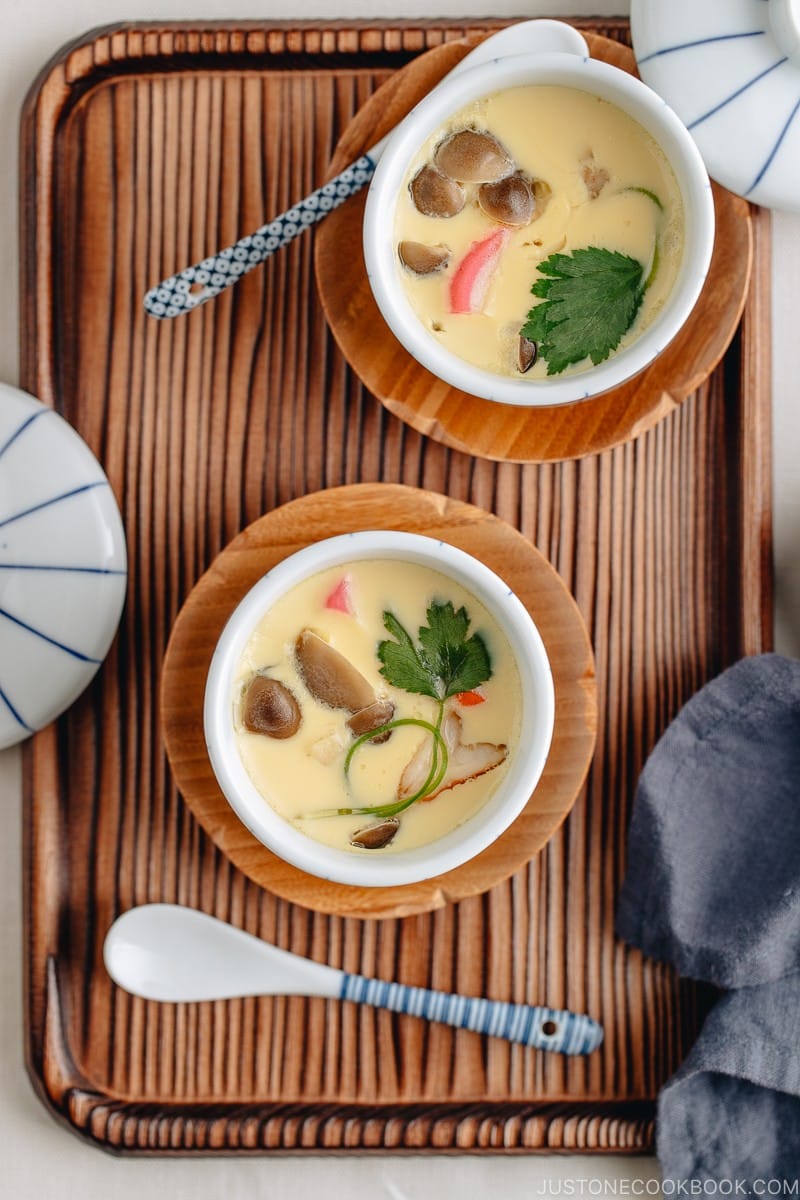
Tips for Soft, Silky and Perfectly Steamed Instant Pot Chawanmushi
1. Strain the egg mixture.
Straining the egg mixture helps to separate any stringy strands of egg whites so you get a smooth and silky custard.
2. Use gentle steam on the low heat setting.
When your chawanmushi has a porous texture with tiny visible holes, we call them “su”. These holes in the steamed egg custard are the indicator of strong heat or overcooking, hence it’s considered a failure. Your goal is to make chawanmushi without these holes. To achieve that, make sure to keep an eye on the cooking time and heat.
3. Check doneness by inserting a skewer.
If the clear juice comes out, it’s done. If the juice is not clear, you will need to cook it longer.
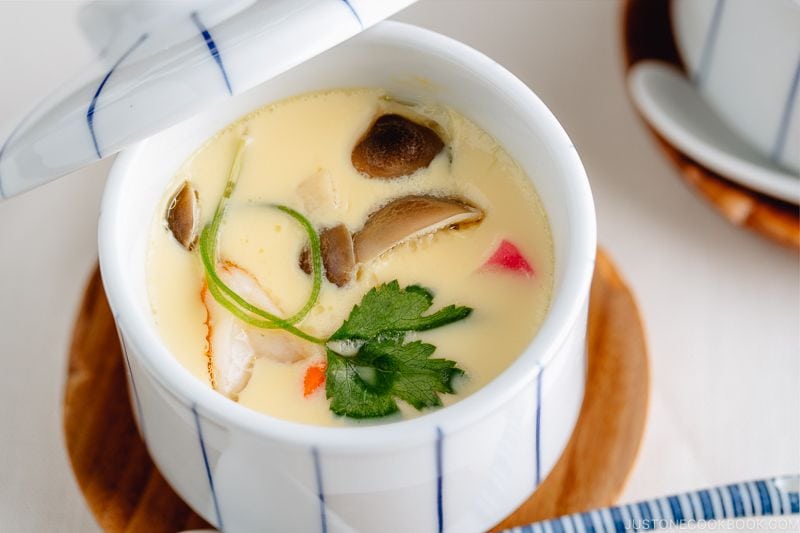
What if you don’t have an Instant Pot?
Don’t worry! Here are other methods to make chawanmushi:
Stovetop Steamer:
You can use a traditional steamer to make chawanmushi. You do not need to cover the steaming cups in this setting. Instead, you will wrap the steamer lid with a large kitchen towel so that condensation from the lid won’t drop into the chawanmushi while steaming. Place the steamer cups in the steamer and leave the lid ajar to let the hot steam escape. This creates a gentle steaming condition inside the steamer. Cook roughly 18-20 minutes.
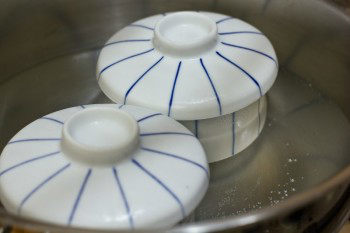 Stovetop Water Bath:
Stovetop Water Bath:
Boil water in a large pot that can fit the steaming cups. Once boiling, reduce the heat to the lowest heat. Gently place the cups inside the hot water and cover the pot with the lid. Cook for 18-20 minutes on the lowest heat.
Steam in the Oven:
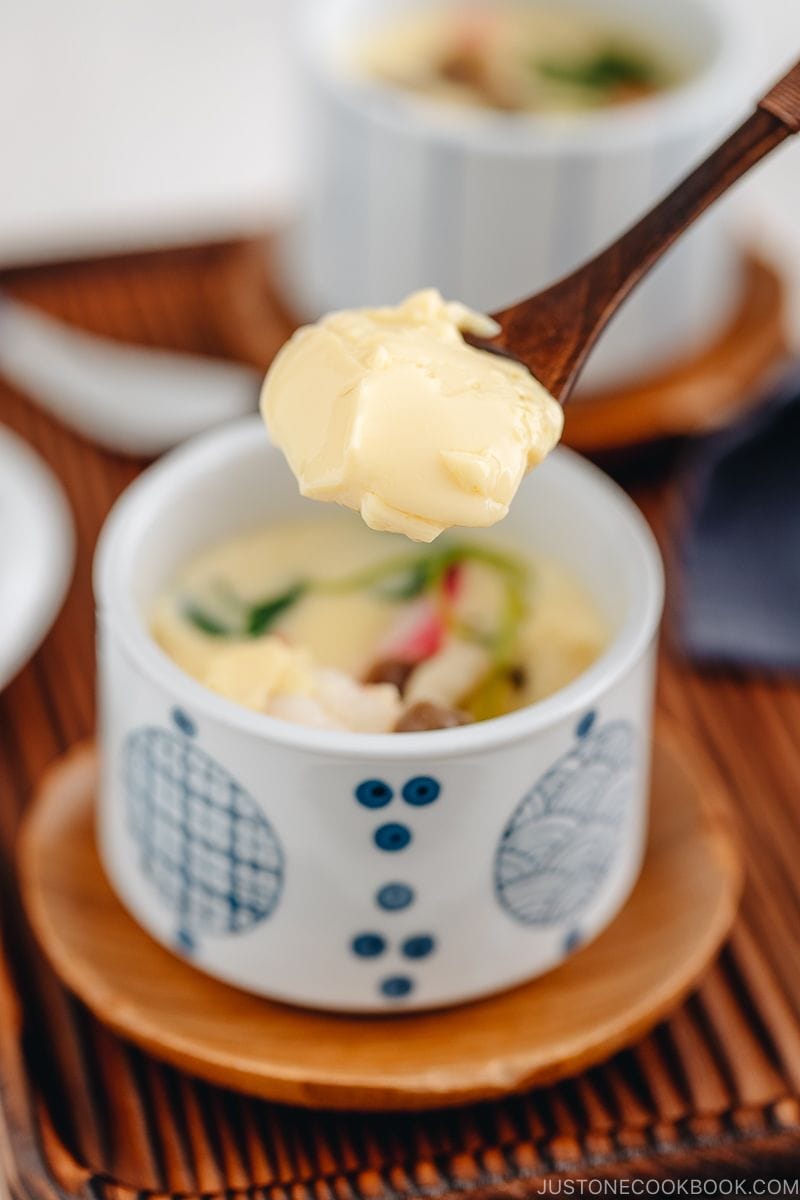
Substitute: What to do if I don’t have…
- Chawanmushi cups – Use ramekins or oven-safe containers. You can use aluminum foil to cover.
- Dashi – Do not skip. The flavor of chawanmushi relies heavily on dashi. For vegetarian, you can use Kombu Dashi. I use Awase Dashi (kombu + katsuobushi/dried bonito flakes).
- Eggs – Try to use good quality eggs for this dish.
- Usukuchi (light color) soy sauce – This type of soy sauce is used especially in the west of Japan (Kyoto and Osaka). The light color soy sauce will keep the broth light in color. It is commonly used for dishes like chawanmushi, noodle soup, and clear soup. You can use less regular soy sauce and add a pinch of salt.
- Mirin – Small amount, but this is one of the essential Japanese ingredients (read here). If you don’t have it, use sake/water + sugar.
- Chicken thighs – You can use chicken breast or chicken tender. We do not use other types of meat for chawanmushi.
- Shrimp – You can use other seafood of yoru choice or skip. If your shrimp are large, cut in half so it will cook faster.
- Shimeji mushrooms – Use your favorite mushrooms.
- Kamaboko (fish cake) – You can use different types of fish cakes (cut into similar size and thickness) or skip.
- Mitsuba (Japanese parsley) – Use chopped chives, green onion, or a few leaves of cilantro.
The seasonal ingredients in this chawanmushi are a delicious treat, but even if you simplify it, your homemade chawanmushi will still taste wonderfully luxurious. I know you’d enjoy this ethereal egg custard!

Japanese Ingredient Substitution: If you want to look for substitutes for Japanese condiments and ingredients, click here.
Sign up for the free Just One Cookbook newsletter delivered to your inbox! And stay in touch with me on Facebook, Pinterest, YouTube, and Instagram for all the latest updates.
Instant Pot Chawanmushi

Steamed in a dashi-based sauce, this Instant Pot Chawanmushi is a savory Japanese egg custard made with seasonal ingredients. Delicate and silky smooth, it makes a perfect appetizer to start your meal!
Egg Mixture
- 1 ¾ cup dashi ((400 ml) (Use kombu dashi for vegetarian))
- 3 large eggs
- 1 tsp mirin
- 1 tsp Usukuchi (Light-Color) Soy Sauce ((Or use regular soy sauce or gluten-free soy sauce for GF))
- ½ tsp kosher salt
Chawanmushi Ingredients
- 1 chicken thigh ((3.4 oz, 96 g) (skip for vegetarian))
- 5 shrimp ((2.6 oz, 73 g) (skip for vegetarian))
- 2 Tbsp sake ((1 Tbsp each for thigh and shrimp))
- 1.4 oz carrot ((40 g, roughly 1.5”))
- 5 stalks mitsuba (Japanese parsley)
- 2.3 oz shimeji mushrooms ((65 g))
- 1 inch Kamaboko (fish cake) ((skip for vegetarian))
Prepare Ingredients
- Gather all the ingredients. Make dashi if you don’t have it around already and let it cool to room temperature (you can place the pot with dashi in it over a bowl of iced water).
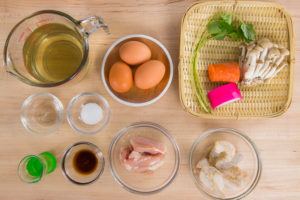
-
Cut the chicken thigh into slanted, smaller bite-sized pieces. I use “Sogigiri” Japanese cutting technique to create more surface so it will cook faster.
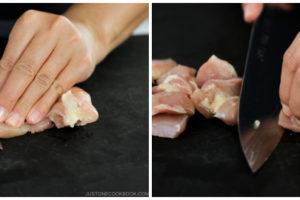
- Put chicken pieces and shrimp each in a bowl and add 1 Tbsp sake to each bowl. This is to remove any unwanted smell from the chicken and shrimp.
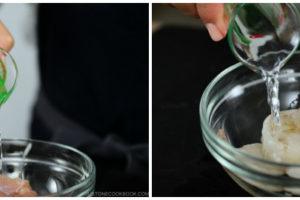
- Cut the carrot into ¼ inch slices. The next step is optional, but you can cut out the carrot slice into flower shape by using a vegetable cutter or use “Nejiri Ume” Japanese cutting technique.
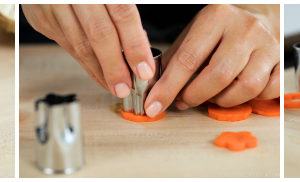
- Make a knot at the stem of mitsuba.
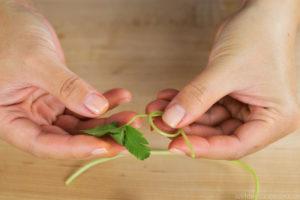
- Cut and discard the bottom end of shimeji mushrooms and slice kamaboko fish cake into thin slices.
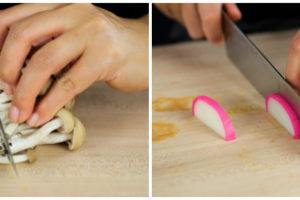
Prepare Egg Mixture
-
It’s best to use a kitchen scale but if you don’t have one, use a liquid measuring cup. Crack eggs in a large bowl on a kitchen scale (or in the liquid measuring cup). My 3 eggs are 153 grams or 153 ml. You will need to multiply that number by 2.5 (Read the blog post why we multiply by 2.5). 153 x 2.5= 382. Prepare 382 grams (or ml) dashi.
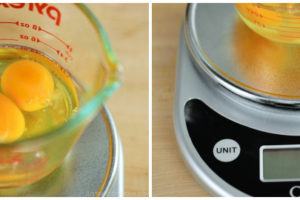
- Transfer the eggs into a large bowl that can fit dashi and seasonings and whisk the eggs.
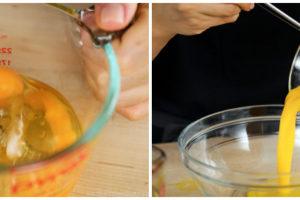
- Add dashi (382 g/ml), 1 tsp mirin, 1 tsp usukuchi soy sauce (or regular soy sauce), and ½ tsp kosher salt. Whisk all together.
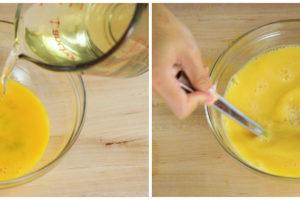
-
Pass the egg mixture through a strainer/sieve into a liquid measuring cup (for easy pouring later on).
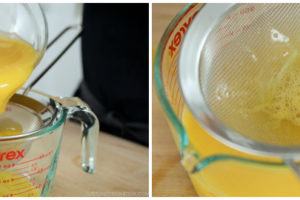
Assemble
- Place the ingredients in each chawanmushi cup or ramekin. You want to show the colorful ingredients on top, so put the non-colorful ingredients like chicken on the bottom. Put more colorful or unique shape ingredients toward the top.
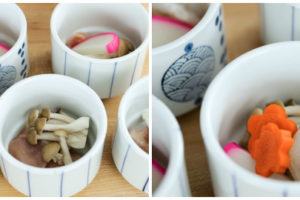
- Evenly distribute the egg mixture into chawanmushi cups. Place the mitsuba on top.
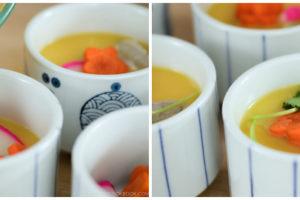
- Cover the chawanmushi cups with lids or wrap with a sheet of aluminum foil (if you are going to stack one on top of another).
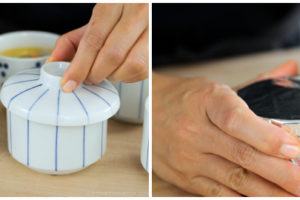
Steam in Instant Pot
- Fill the instant pot with 1 cup water. Set the steamer rack in place.
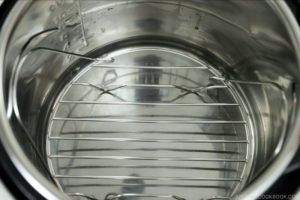
- Put the chawanmushi cups inside. The 5th chawanmushi cup goes on top of the 4 cups.
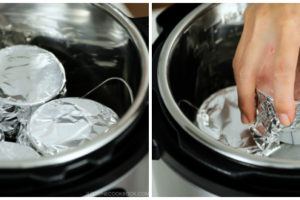
- Close the lid and click STEAM, make sure it’s LOW pressure and set the timer for zero (0) minute.

- It will take about 10 minutes to reach the optimal pressure. Then beep for 0 minute. Then it will naturally release. Set your own timer for 10 minutes natural release.
- At 10 minutes alarm, open the lid and take out one chawanmushi cup and go to the next step. If the lid doesn’t open, then it means the pressure hasn’t fully released yet. Prepare a kitchen towel and turn the nozzle to release pressure. Only a little bit of steam should be left, so don’t be scared. Once the pressure has released, you can open the lid.
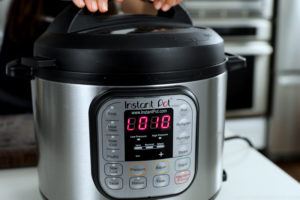
- Open the chawanmushi cup lid (or aluminum foil) and insert a skewer to see if the egg custard is fully cooked. If the custard look set and there is no liquid coming out, it is fully cooked.
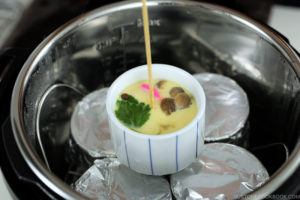
-
If the chawanmushi is not fully cooked yet (most likely your container is bigger than my chawanmushi cups OR you must have used a colder egg mixture or ingredients), repeat the steam process, and release the air pressure manually. Remember, the egg mixture will continue to cook through from pre- and after- pressure cooking time.
- Place the chawanmushi lid on and serve hot with a small spoon.
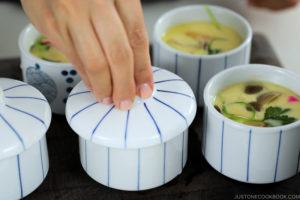
Japanese Ingredient Substitution: If you want to look for substitutes for Japanese condiments and ingredients, click here.
Use Kombu Dashi for a vegetarian version.
Recipe by Namiko Chen of Just One Cookbook. All images and content on this site are copyright protected. Please do not use my images without my permission. If you’d like to share this recipe on your site, please re-write the recipe in your own words and link to this post as the original source. Thank you.
from Merah Hati Cintaku http://bit.ly/2RjPmaZ
via MerahHatiCintaku.blogspot.com